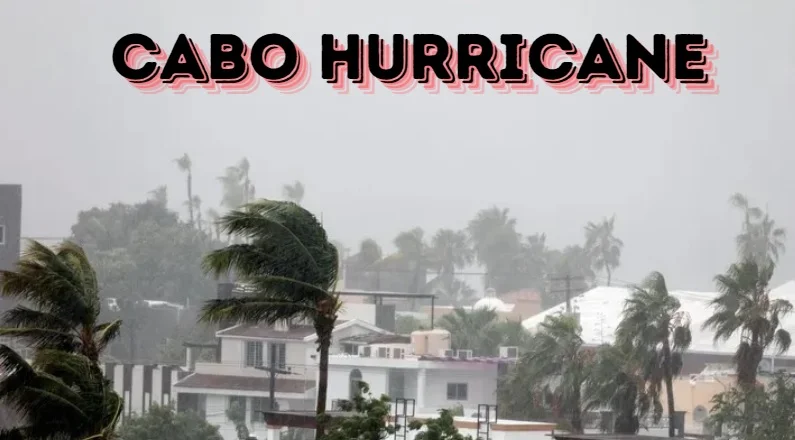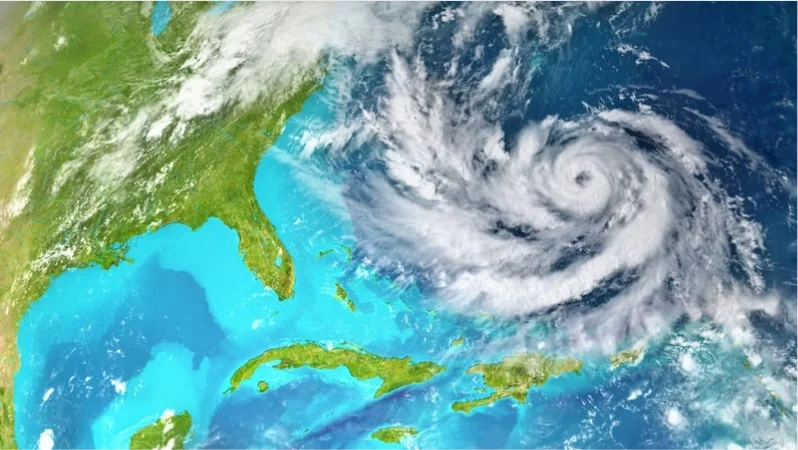Cabo San Lucas, a popular tourist destination located at the southern tip of Mexico’s Baja California Peninsula, has recently faced the devastating impact of Hurricane Norma. As a Category 1 hurricane, Norma made landfall on Saturday afternoon, bringing sustained winds of 85 mph and life-threatening conditions to this vibrant coastal city. This article explores the details surrounding Hurricane Norma, its rapid intensification, and the broader implications of the 2023 hurricane season in both the Atlantic and Pacific regions.
The Approach of Hurricane Norma
Norma, which gained momentum as it approached Mexico, underwent a phenomenon known as rapid intensification. This term refers to a significant increase in a storm’s wind speed within a short period, typically 24 hours. According to meteorologists from Accuweather, Norma’s maximum sustained wind speed reached 100 mph on Saturday morning, just 10 mph short of the threshold for a Category 3 major hurricane. The rapid intensification of storms like Norma can create severe challenges for communities in their projected paths, as they may have little time to prepare for the approaching danger.
As Norma approached landfall, the effects of the storm began to be felt in Cabo San Lucas. The coastal region braced for heavy rainfall, dangerous surf conditions, and powerful winds. These factors created life-threatening scenarios, particularly for tourists and residents who were in the area during the storm’s peak intensity. Local authorities were on high alert, issuing warnings and advisories to ensure the safety of those in the affected regions.
The Broader Context of the 2023 Hurricane Season
The 2023 hurricane season has proven to be an above-average one for both the Atlantic and Pacific oceans, with a series of powerful storms impacting various regions. In the Pacific, seven major hurricanes have occurred this season, illustrating a trend of increasing intensity and frequency. One notable storm was Hurricane Dora, which reached Category 4 status as it traversed from the Mexican coast toward a remote area south of Hawaii in August. Dora generated significant surf warnings across Hawaii, and its powerful winds contributed to the tragic spread of a devastating wildfire in Maui.
Another significant event this season was Hilary, which also strengthened into a Category 4 storm as it approached southern California. This rare meteorological event caught the attention of residents and meteorologists alike, as it marked the first hurricane to make landfall in California since 1949. Hilary’s impact was felt widely, bringing much-needed rain to the drought-stricken region while simultaneously creating hazardous conditions along the coast of Mexico and California.
The occurrence of these storms highlights the increasing volatility of weather patterns and the effects of climate change on hurricane intensity and frequency. The phenomenon of rapid intensification, as demonstrated by Hurricane Norma, poses significant challenges for meteorologists and emergency response teams, who may struggle to provide timely warnings and prepare affected areas for the impending impact.

Preparing for Hurricane Norma’s Impact
In anticipation of Hurricane Norma’s arrival, authorities in Cabo San Lucas took proactive measures to safeguard the local population and tourists. Evacuations were organized in areas at high risk of flooding and landslides, and shelters were established to accommodate displaced individuals. Local businesses and hotels also prepared for the storm by securing outdoor furniture, reinforcing windows, and stocking up on essential supplies for guests.
In addition to physical preparations, communication played a critical role in ensuring the safety of residents and visitors. Local officials disseminated information through various channels, including social media, radio broadcasts, and emergency alerts, to keep the public informed of the storm’s progress and necessary safety precautions. The importance of community resilience and preparedness cannot be understated in the face of such natural disasters, as timely information can save lives and minimize the impact of the storm.
The Aftermath of Hurricane Norma
As Norma made landfall and gradually weakened, Cabo San Lucas faced the aftermath of the storm. The city experienced heavy rainfall, strong winds, and dangerous surf conditions that could have caused significant damage to infrastructure, homes, and businesses. Assessing the impact of the hurricane in the days following landfall is crucial for local authorities and recovery efforts.
In the aftermath of the storm, local and federal agencies will likely conduct damage assessments to evaluate the extent of the destruction and determine the necessary resources for recovery and rebuilding. This process is essential for restoring normalcy to the affected communities and ensuring that residents can return to their homes and businesses safely.
Moreover, Norma serves as a reminder of the increasing risks posed by climate change and extreme weather events. The potential for future storms to impact Cabo San Lucas and surrounding regions highlights the need for sustainable practices and investment in infrastructure that can withstand such challenges.
Conclusion:
Cabo Hurricane- Hurricane Norma’s impact on Cabo San Lucas exemplifies the increasing frequency and intensity of hurricanes in both the Pacific and Atlantic oceans. The storm’s rapid intensification and subsequent landfall serve as a wake-up call for communities and emergency response teams, underscoring the importance of preparedness and resilience in the face of natural disasters.
As the 2023 hurricane season continues, it is crucial for residents, tourists, and local authorities to remain vigilant and proactive in their approach to potential threats. By investing in infrastructure, fostering community resilience, and prioritizing effective communication, Cabo San Lucas and other vulnerable regions can better prepare for the challenges posed by future hurricanes.









